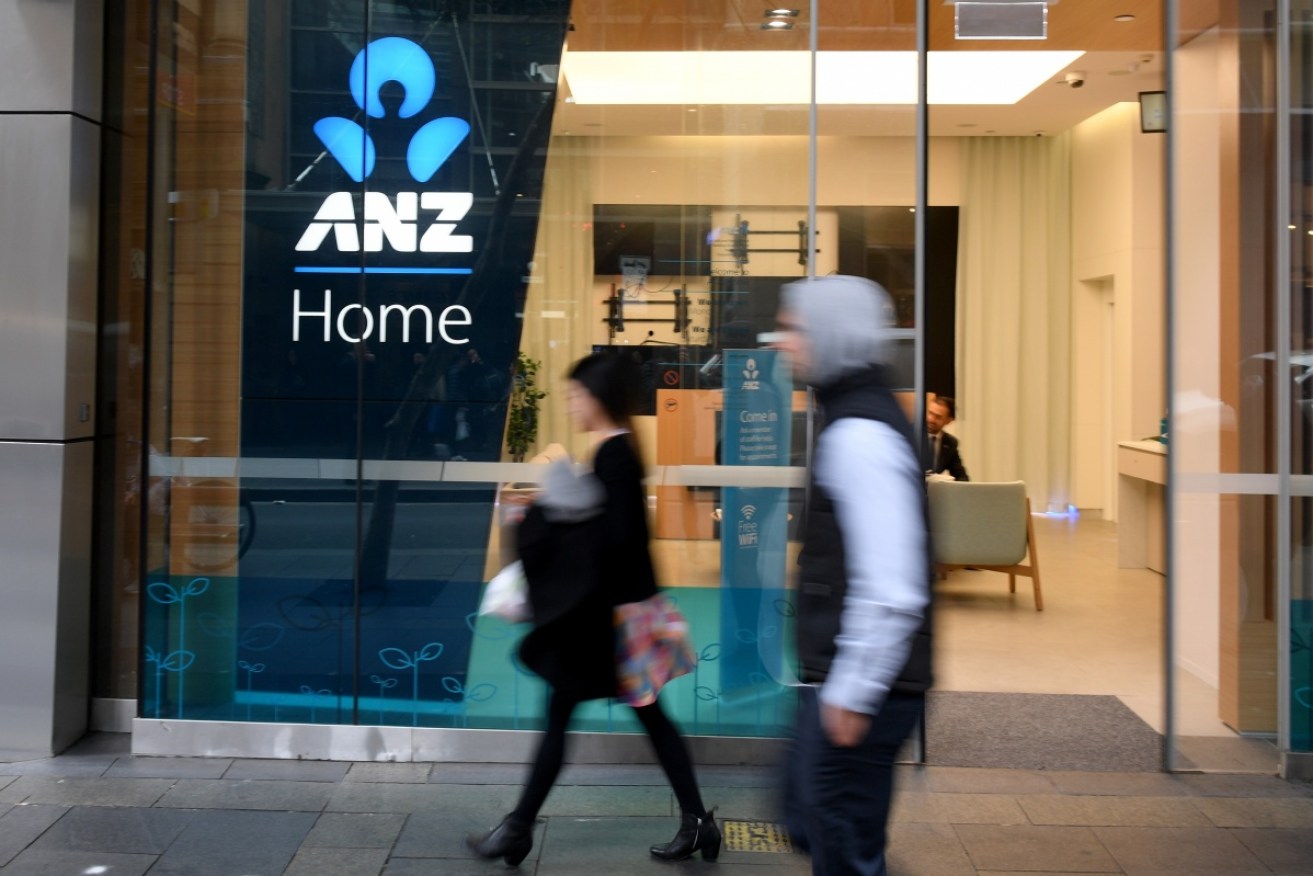First-home buyers out in the cold as big banks slash interest rates


The ANZ is cutting mortgage rates but first-home buyers won’t gain as much. Photo: AAP
ANZ’s latest cut in mortgage rates has highlighted that first-home buyers are being left out in the cold in favour of wealthier customers.
The bank caught up to its peers on Monday when it cut its standard variable home loan rate by 0.43 percentage points to 2.29 per cent.
But that applies only to people who can come up with a deposit of 30 per cent and therefore borrow on a loan-to-valuation ratio of 70 per cent.
If you can only raise a 20 per cent deposit – like many first-home buyers – then the bank will only lend to you at 2.49 per cent, a decrease of 0.23 percentage points.
The cuts match similar moves from major competitors – Commonwealth Bank, NAB and Westpac – reflecting growing competition in the home loan market.
“The ANZ is trying to attract more business but they want more of it to be in lower loan-to-valuation segment,” said Steve Mickenbecker, chief commentator with Canstar.
That move to grab more wealthier borrowers signals that the bank is uncertain of the future of the housing market in the face of price rises of more than 20 per cent this year.
“They are hedging their bets a little bit,” Mr Mickenbecker said.
When interest rates rise in the future house prices may fall and those with larger deposits will weather the storm better, Mr Mickenbecker said.
“Given the likely future direction of interest rates, they might not be so surprised to see property prices fall so they’re building a little insurance into their home lending portfolio,” he said.
Way to grow
Jo Masters, chief economist with EY Oceania, said the move to attract borrowers with bigger deposits, “tells you that in order to grow their mortgage book they need to focus on higher-quality borrowing”.
“That is not surprising,” Ms Masters said.
Home prices are also still rising, eroding the positions of those with smaller deposits.
First-home buyers are likely to be the ones that miss out as a result because they find it hardest to come up with a 30 per cent deposit.
“It’s a logical move, but it’s kicking sand into the faces of first-home buyers,” Mr Mickenbecker said.
The move by the banks to lower home loan rates demonstrates that the banks are in a pushing contest with regulators.
“Until recently APRA had told the banks they needed to make sure that borrowers could manage a 2.5 per cent rise in interest rates,” said Angie Zigomanis, director with property advisory group Charter Keck Cramer.
“They were worried that people were overstretching themselves, so they said we want loans assessed with a buffer of 3 per cent.”
 So the cuts in interest rates right across the major banks means buyers now have a bit more purchase against APRA’s pushing in the market.
So the cuts in interest rates right across the major banks means buyers now have a bit more purchase against APRA’s pushing in the market.
The banks have effectively lowered the platform on which APRA has added its cautionary extra costs.
There is also another regulatory move that is raising pressure on interest rates.
That is the RBA’s admission on Melbourne Cup Day that it was no longer going to hold the three-year bond rate at the rock-bottom rate of 0.1 per cent, where it is holding the cash rate.
In the run up to that decision, and since, the three-year bond rate spiked up to as high as 0.85 per cent and that changes the equation for fixed-rate mortgages.
As the above chart shows three-year fixed mortgage rates are now sitting at approximately the same level as the standard variable rate, meaning the advantage of borrowing three years fixed has vanished.
As the graph below demonstrates, fixed-rate mortgages are about to get more expensive as the RBA stops holding the three-year rate so low.
It means if you want to get a fixed-rate loan you have to act quickly before the market pushes rates even higher as mortgage rates catch up with the bond market. The move to make loans more expensive for first-home buyers will add to a trend that has been evident for some time as house prices have spiked.
The move to make loans more expensive for first-home buyers will add to a trend that has been evident for some time as house prices have spiked.
“We have started to see first-home buyers actually going backwards in terms of how close they are getting to being able to buy in,” Mr Mickenbecker said.
Although owner-occupiers were dominating the housing market in the early post-COVID recovery, investors have come back into the market more recently in a rush.
“Investment borrowing is booming – it just keeps going up month after month,” Mr Mickenbecker said.
“The strength of the investor market amazes and shows their faith in the price outlook for property, with the number of new loans up from 11,608 in September last year to 18,635 in September this year.”
Overall, the value of loans made to investors jumped by a massive 83 per cent over the period.
The appearance of significant inflation in the US and to a lesser extent here means that we are probably sitting at the nadir of mortgage rates.
“Some of it [low rates] is cyclical and some is a result of pandemic disruptions, but it seem pretty clear that interest rates are likely to be heading higher in the next few years, not lower,” Ms Masters said.









